Someone had said one word to me that I had carefully written down: Choquequirao.
That’s all I had and the knowledge that this time I couldn’t hike alone like in the Colca Canyon. I spent a few hours wandering around the trekking agencies in Cusco saying this word to them, either getting shakes of the head or wildly outrageous prices. But then it worked out, as it often does, when I walked in to the little office of Coco Travel and there was a Swiss couple asking about the same destination and a manager absolutely overjoyed that people wanted to go to this magical place. So that was that: a seven-day adventure to visit Choquequirao and then on to Machu Picchu arranged.
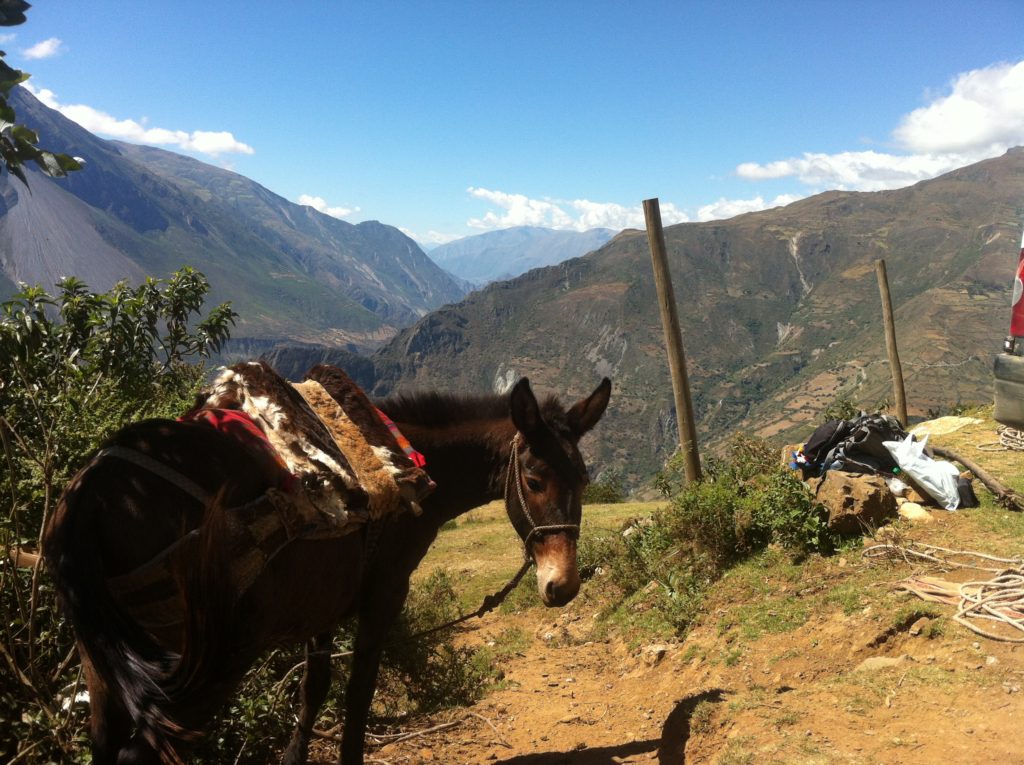
We were picked up early in the morning, Alberto the cook jumping in with fresh bread along the way. Frank, the enthusiastic manager, was so happy that he came along as our guide. He was very passionate about his people and his heritage: his baby’s name translates as “Inca prince”. He nicknamed our little team of three Los Chasquis (the name of the Inca messenger runners) because we were relatively fit and quick. We had a quick breakfast, packed up the mules and were on our way.
Our goal of Choquequirao is a city abandoned to the forest and guarded by mountains; its terraces with white quartzite llamas rescued by archaeologists in 2004. Only a small amount of the site is excavated which, along with the lack of crowds, gives it a wonderful just-discovered air. The payment for such an experience is quite a bit of walking: there is no road or no other way to get to the site (there are apparently plans to build a cable car but those have remained only plans for several years).
The first day, we climbed down from Cachora village (2800m) to the Apurimaq river valley (1500m) before trekking back up to Santa Rosa Alta camp (2200m). The camp there is great: a proper toilet, solar shower… and plenty of sandflies! We watched shooting stars after Alberto’s amazing cooking.

The second day was a long slog up to to enter the site itself past our second camping site at Marampata. Far below, I could see old terraces and Choquequirao (3033m) suddenly emerged from the mists. Frank was the best guide for the site itself: he showed us the high ceremonial platform with the trapezoid openings of an old offering door and walked us through two palaces. We climbed up to Hanna, a higher building where mummies were kept and a ritual fountain that now stands dry. On the other side of the mountain is the most well-known part of the site: the llama terraces. We had the whole place to ourselves and lay on the main plaza for a long time, imaging ourselves to be in the middle of an Inca crowd, watching condors catching thermals.
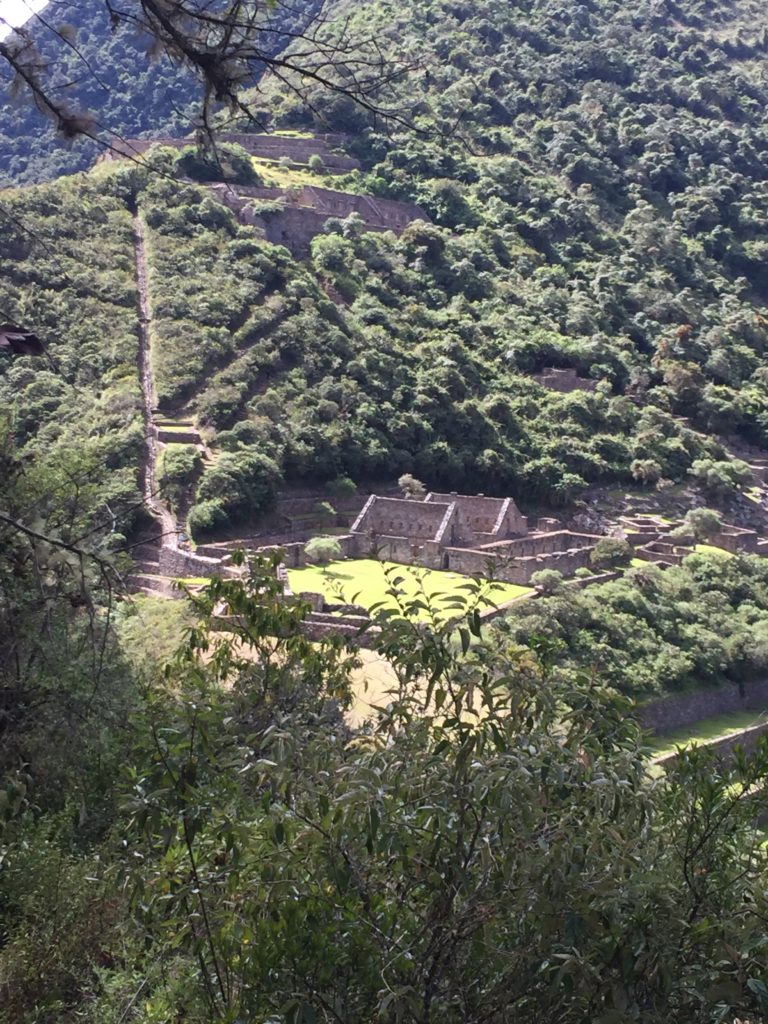
Choquequirao 
Doorways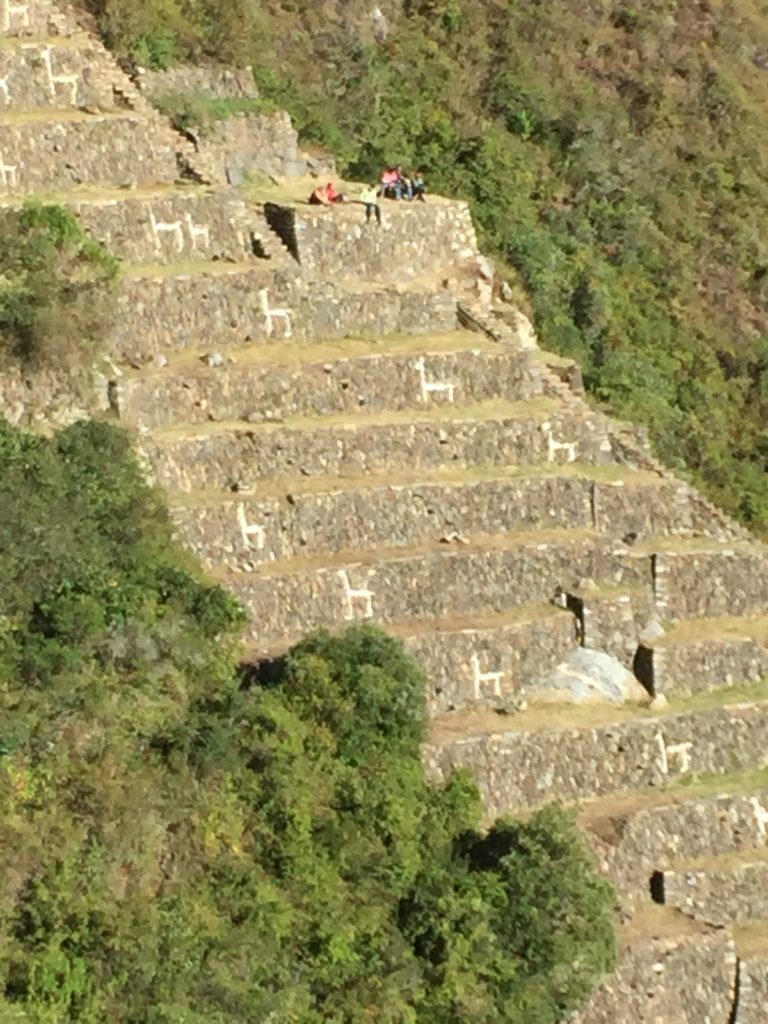
Llama Terrace
The third day took us above Choquequirao through the cloud forest. It was dense, dark and damp before we crossed a pass (3200m), wound down the shoulder of a mountain passing the ruins at Pinchuiniyoc to the Rio Blanco (2200m). I ate a lot of tuna, cactus fruit, peeled from its spiky skin, and my legs were covered in red bites from the sandflies. We climbed back up to camp at 3000m: tents set up by a lovely lady’s farm. She chatted away in Quechua to Frank while her little girl stayed a safe distance away from us strangers. The chickens, goats and mules were less nervous.
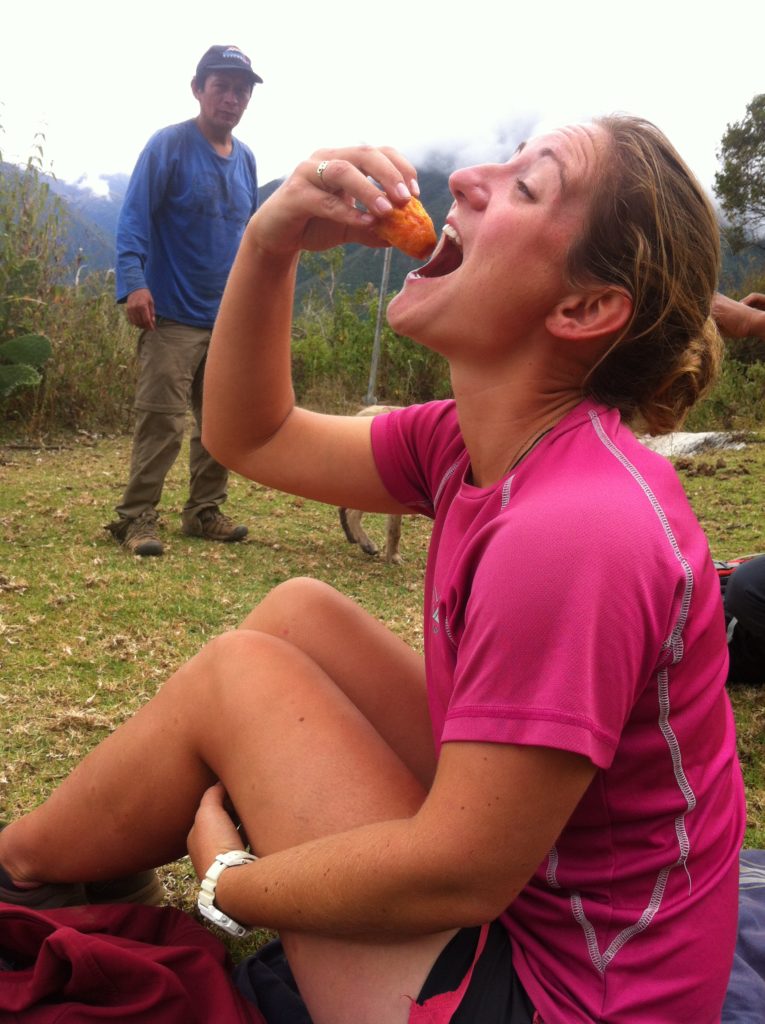
The third day took us above Choquequirao through the cloud forest. It was dense, dark and damp before we crossed a pass (3200m), wound down the shoulder of a mountain passing the ruins at Pinchuiniyoc to the Rio Blanco (2200m). I ate a lot of tuna, cactus fruit, peeled from its spiky skin, and my legs were covered in red bites from the sandflies. We climbed back up to camp at 3000m: tents set up by a lovely lady’s farm. She chatted away in Quechua to Frank while her little girl stayed a safe distance away from us strangers. The chickens, goats and mules were less nervous.
On the fourth day, we contoured around the side of the valley, high above yesterday’s path. It was warm and cold as we walked in and out of the sun. Flocks of birds flew across our path. We climbed for 4 hours to finally cross Victoria Pass (4150m). On one side, we could see the valley we had climbed for two days. On the other side was a new valley and a 6000m monster glowing with his white head. A condor drifted above and I took a break sunbathing. Too soon, we had to descend through purple and yellow flowers to Yanama village (3800m). We watched the local Saturday football match being played on a pitch where one side dropped sharply to a river. We said goodbye to our faithful mules who had to walk all the way back to Cachora and hopped into a car. It was a spectacular drive to Collipapampa, passing a glacier and one terrifyingly spiked mountain before crossing a pass and having a wonderful view of Salkantay mountain. Our arrival to Collipapama marked our confluence into the stream of people on the main Salkantay trail.
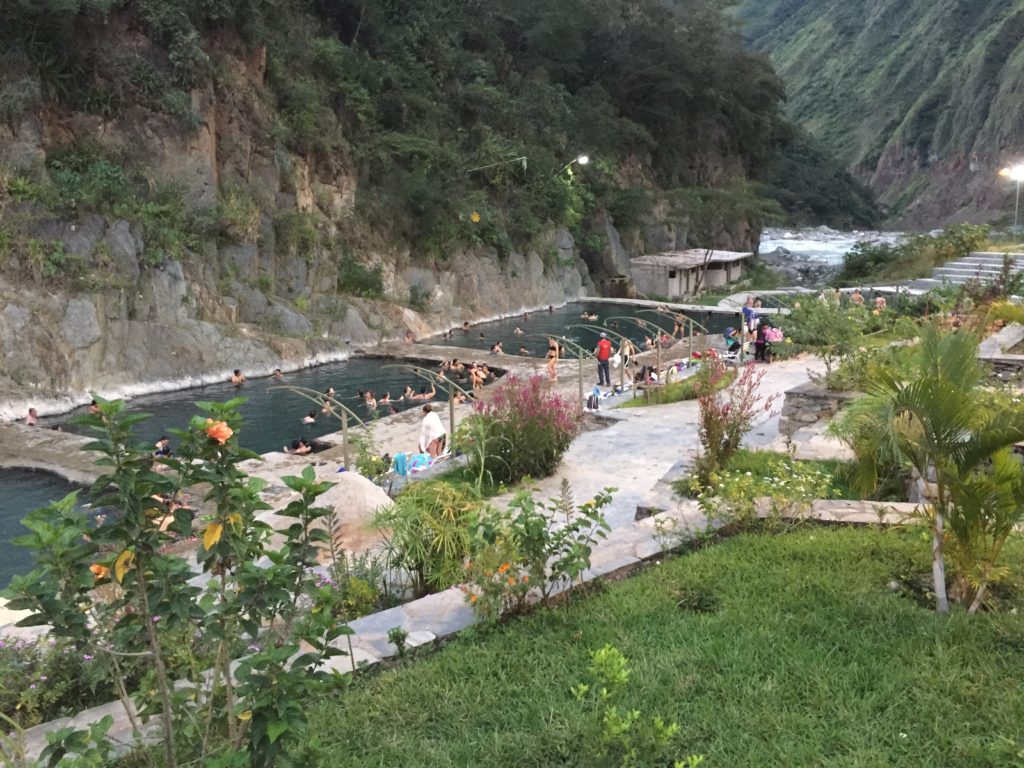
We strolled on day five from Collipapampa to La Playa, taking dips in the stream and eating grenadillo fruit. Then we had a ride to Santa Theresa to finally soak in the thermal pools.
Day six was a rather sad day, saying goodbye to Alberto over final breakfast pancakes and coca tea, then walking 2 1/2 hours on a road to Hidroelectrica train station, minibuses carrying people to ziplining streaming by. It was hot and dusty with no shade. Lunch was at a restaurant full of larger groups before a 3 hour walk along the train tracks to Aqua Calientes, looking up at the mountain hiding Machu Picchu high above. At the entrance to town, we passed a mound of plastic bottles waiting to be piled into train- I hoped for recycling. After so many days in the hills, Aqua Calientes felt like an Inca Disneyworld with the big, gold statue of Pachacuti in the main plaza and every sign geared towards tourists.
The final day, day seven, was the early morning climb up to Machu Picchu itself. 400m ascent by headtorch light was small game for Los Chasquis at this stage. We were greeted by a site covered in mist, dull persistent rain and one café where everyone was hiding out. The crowds, the buses, the rain could not have made a sharper contrast with sun-soaked Choquequirao. But once the sun burned away the mist, there was no avoiding the magnificence of the site and the required pictures were taken.
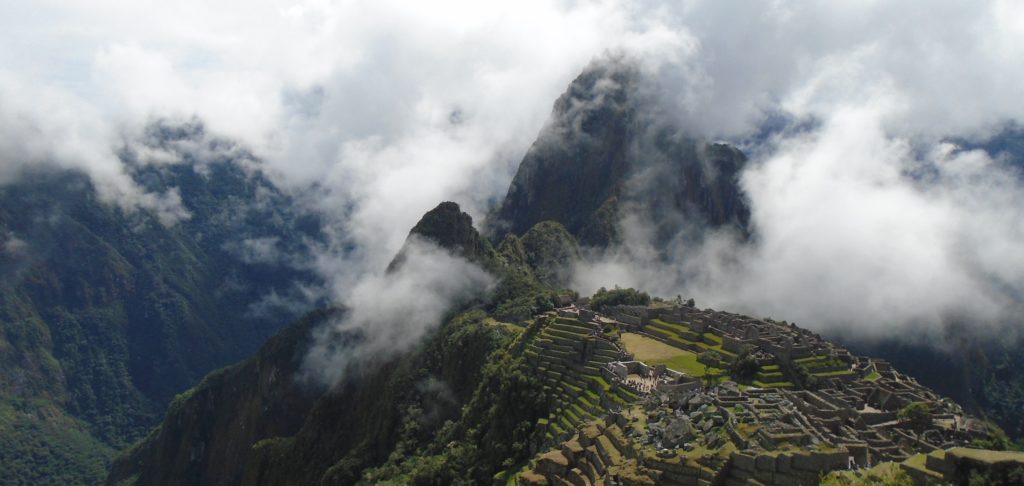
All that was left was a walk back along the train tracks, a 6 1/2 bus ride back to Cusco with our legs aching, and one long, hot shower.
TOP TIPS FOR CHOQUEQUIRAO
- It is possible just to walk in and out of Choquequirao itself without continuing to Machu Picchu as we did, this only take a few days
- It’s also possible to hike the route without a guide if you have the experience, correct kit and the navigation tools. But the guide is worth every penny and the cook even more so!
- Choose your guides well (consider what you are actually getting in terms of hiking days/road transfer days) but once you’ve chosen, trust them! They know what they’re doing
- Hopefully the altitude figures will show you that this is not an easy route. You need to be fit. Assess for yourself whether you are up for the challenge
- Take only refillable water bottles and some way to purify water (I had a Steripen with me): don’t let your bottle become one in the pile outside Aqua Calientes
- By day, it is very warm and by night, very cold. Sunscreen, sunglasses and lots of layers are essential